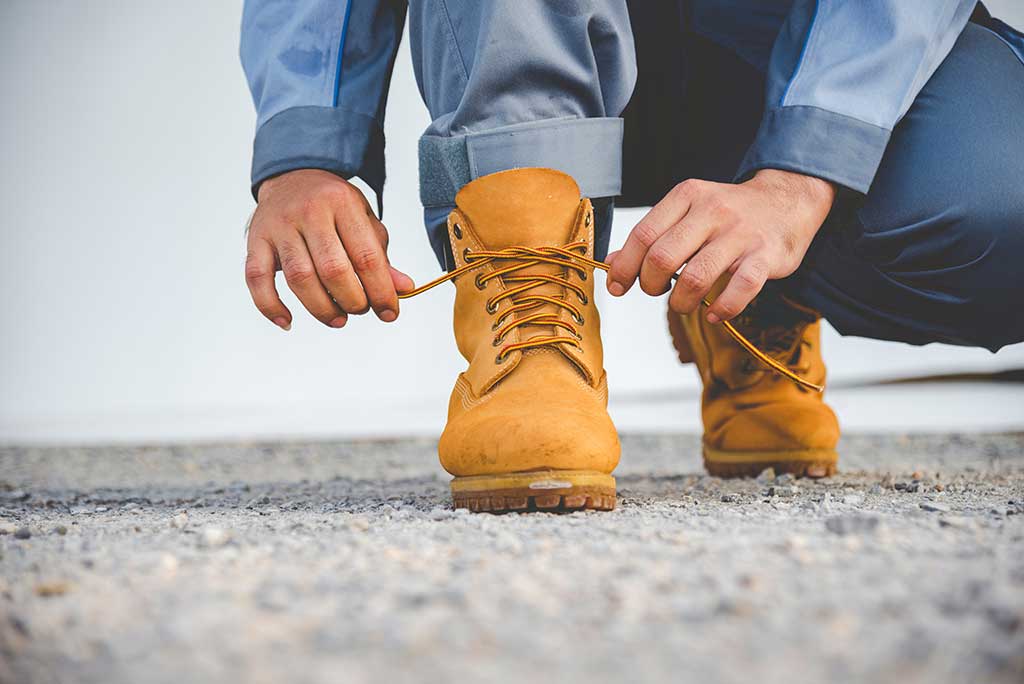How to lace boots for optimal ankle support?

When you lace up your boots, the right lacing isn't just about aesthetics, but plays a crucial role in the support of your ankles. Proper lacing can prevent many injuries and greatly improve your day-to-day comfort. In this introduction, we'll discuss why lacing is so important to the health of your ankles, as well as the most effective methods for achieving optimal support.
First, we'll look at cross lacing, loop lacing and X-pattern lacing techniques, each offering specific benefits for ankle support. Then, we'll share practical tips on how to choose the right length of laces and adjust their tension. Regular maintenance of laces and boots will complete this guide to ensure their durability and effectiveness.

Importance of lacing for ankle support
The role of lacing in injury prevention
Have you ever experienced sudden ankle pain after a long walk or a day on your feet? The problem could lie in your lacing technique. By holding your feet firmly in place, laces reduce unwanted lateral movements that can lead to sprains. For example, cross lacing provides added stability by distributing pressure evenly across the foot.
Impact on performance and comfort
A well-supported ankle not only improves your safety but also your performance. Whether you're an athlete or a manual worker, well-fitting laces help transfer energy from your legs to your feet, increasing your efficiency. Imagine running a marathon with loose laces: every stride becomes more difficult and risks causing unnecessary pain.
Also, comfort is essential to avoid blisters and other discomforts. A good filling (or padding) under the sole combined with a correctly positioned rivet can also contribute to the optimal support of your shoe, thus complementing the beneficial effect of good lacing.
Lacing methods for optimum ankle support
To ensure impeccable support and prevent injury, it's essential to master the different lacing techniques suitable for boots. Each method offers specific benefits in terms of support and comfort. Let's explore these essential techniques together.
Cross lacing technique
The cross lacing technique is undoubtedly one of the most popular and effective. It involves running the laces diagonally from eyelet to eyelet, forming a series of ‘X ’s along the instep. This type of lacing distributes pressure evenly over the entire foot, providing excellent lateral support and reducing the risk of sprains.
Loop lacing technique
Loop lacing is particularly recommended for those looking to fine-tune the fit around the ankles. By forming additional loops around the eyelets near the top of the boot, this method makes it easy to increase or decrease the tension as required. It's an ideal technique for sporting activities requiring a rigorous fit.
X-pattern lacing technique
The X pattern not only adds an aesthetic touch to your boots but also provides extra support for your ankle. To create this type of lacing, start by forming a cross as in the first example, then create a second inverted cross on top. This overlap strengthens support and stabilises your ankle perfectly during intense movements.
Have you already tried any of these techniques? If not, it's time to experiment and find the one that suits you best! The right choice can completely transform your everyday or sporting experience with your favourite boots.
Tips and tricks for effective lacing
To ensure optimum ankle support, it's essential to adopt good lacing practices. Good lacing is about more than aesthetics. Here are a few tips to help you master this subtle art.
Choosing the right length of laces
Selecting the right laces is an essential step. Laces that are too short can limit your ability to adjust your boots properly, while laces that are too long can tangle or come undone easily. For high boots, opt for laces between 160 cm and 200 cm in length, depending on the number of eyelets.
Adjusting lace tension
The precise adjustment of lace tension directly influences fit and comfort. Overtightening can compress your foot, causing discomfort or even pain, while undertightening can compromise the support your ankle needs. To find the perfect balance, start by tightening your laces moderately at the instep, then gradually adjust as you work your way up.
Regular maintenance of laces and boots
Regular maintenance not only prolongs the life of your boots but also ensures they are supportive. Replace your laces at the first signs of wear to avoid any unexpected breaks that could occur at the worst possible time. Also, clean your boots regularly to maintain optimum adhesion between the eyelets and laces.
Take care also of the filling, that crucial part that allows your sole to offer an even grip surface after fitting or sewing. Particular attention should be paid to the rivets if your boots have them: these little cylindrical pins often provide extra strength to the whole.
By applying these tips rigorously, you not only guarantee optimum support but also a pleasant experience when wearing your boots for longer periods.
We recommend these other pages:
